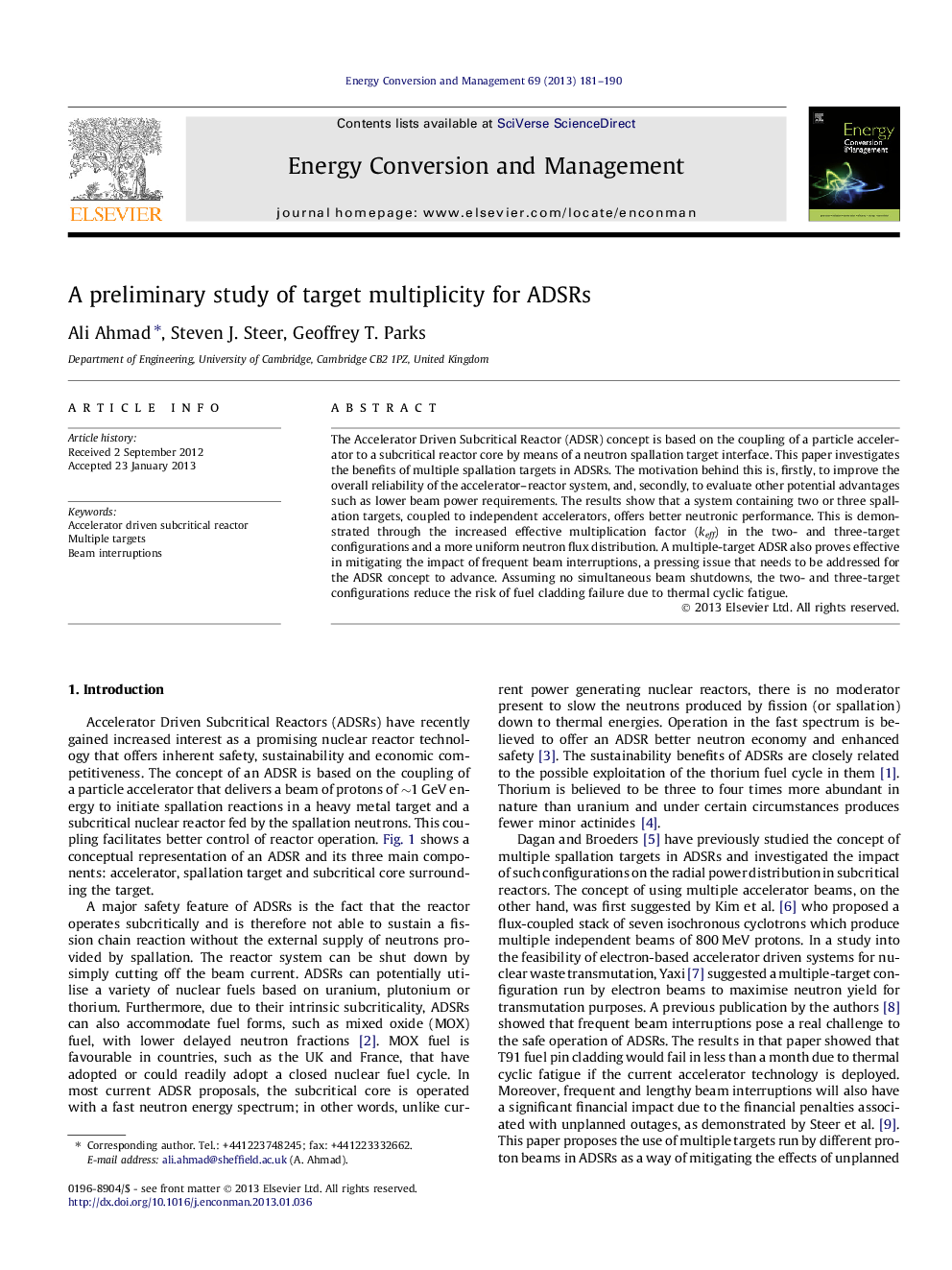| Article ID | Journal | Published Year | Pages | File Type |
|---|---|---|---|---|
| 760978 | Energy Conversion and Management | 2013 | 10 Pages |
The Accelerator Driven Subcritical Reactor (ADSR) concept is based on the coupling of a particle accelerator to a subcritical reactor core by means of a neutron spallation target interface. This paper investigates the benefits of multiple spallation targets in ADSRs. The motivation behind this is, firstly, to improve the overall reliability of the accelerator–reactor system, and, secondly, to evaluate other potential advantages such as lower beam power requirements. The results show that a system containing two or three spallation targets, coupled to independent accelerators, offers better neutronic performance. This is demonstrated through the increased effective multiplication factor (keff) in the two- and three-target configurations and a more uniform neutron flux distribution. A multiple-target ADSR also proves effective in mitigating the impact of frequent beam interruptions, a pressing issue that needs to be addressed for the ADSR concept to advance. Assuming no simultaneous beam shutdowns, the two- and three-target configurations reduce the risk of fuel cladding failure due to thermal cyclic fatigue.
► We propose a concept of multiple-target ADSR. ► We study the neutronic performance of the two- and three-target ADSR. ► We perform thermal fatigue analysis for the proposed configurations. ► The integrity of fuel cladding can be assumed unaffected by beam trips in multiple-target ADSR. ► The multiple-target design presents a low risk option for demonstrating the first-of-a-kind ADSR.
